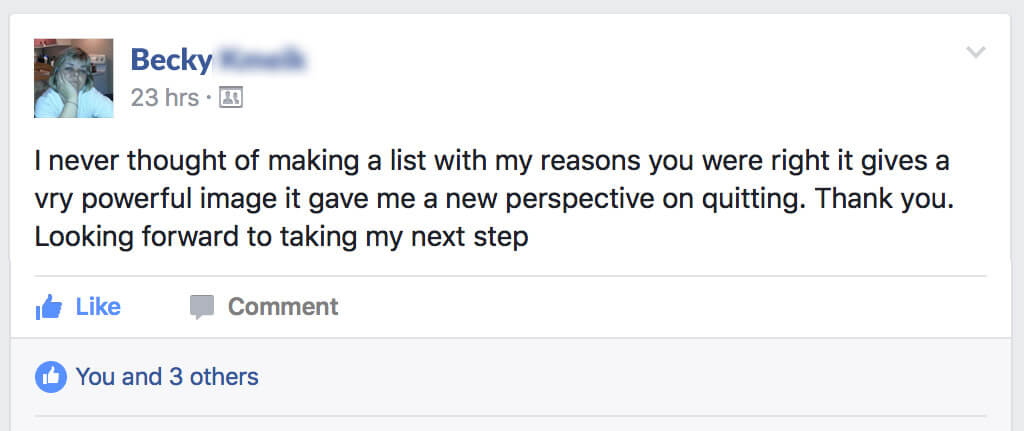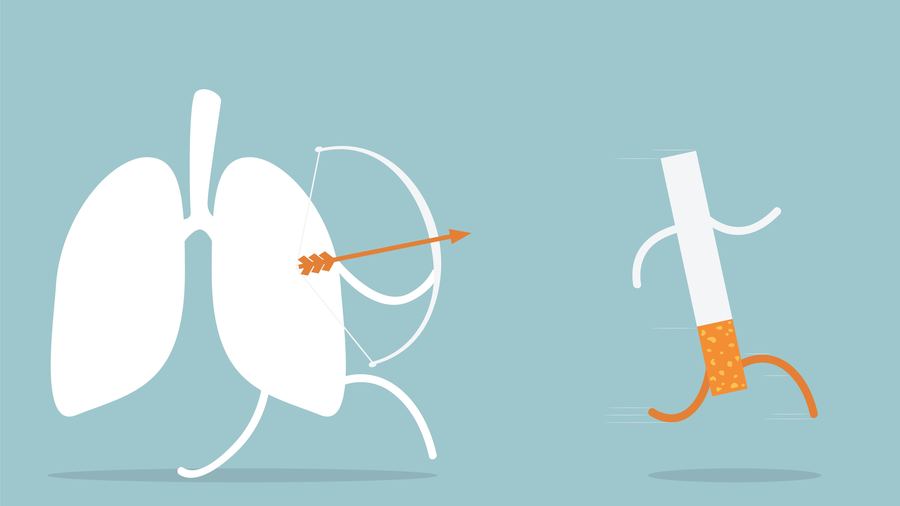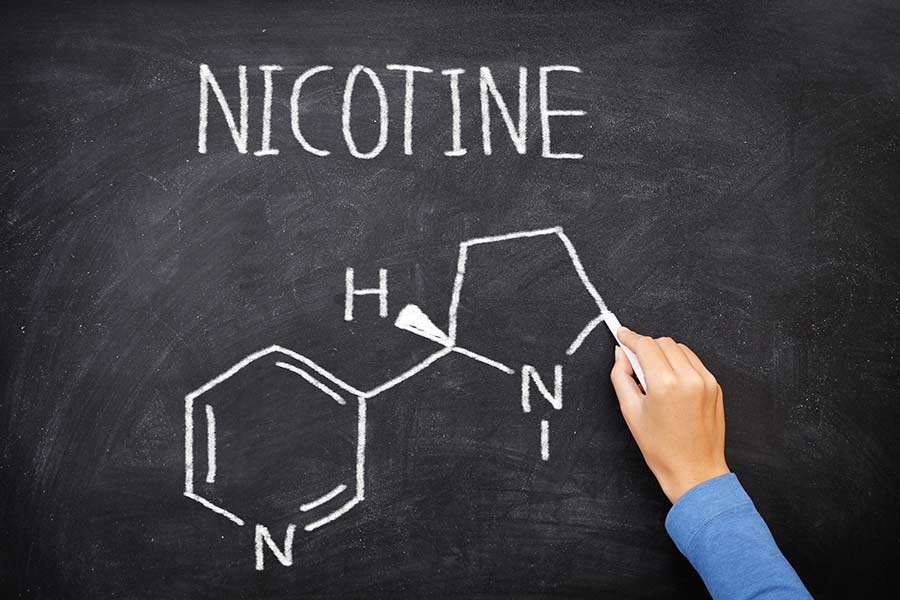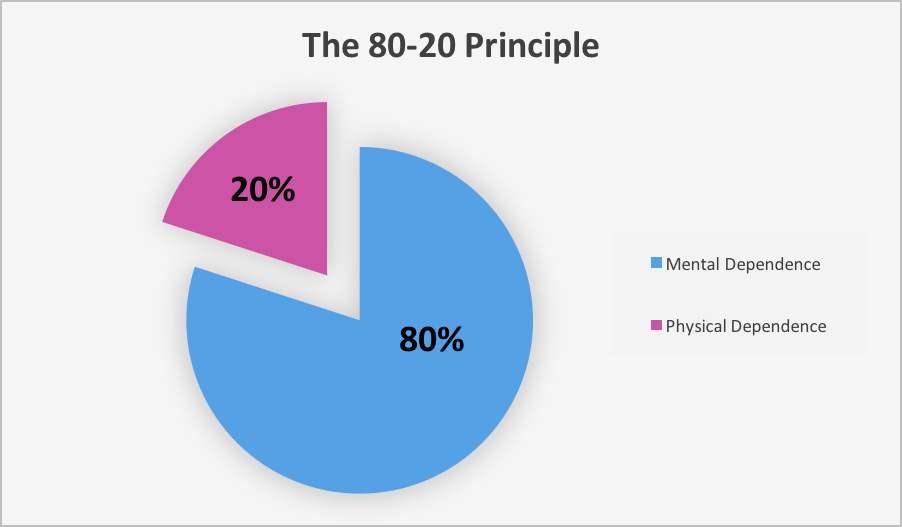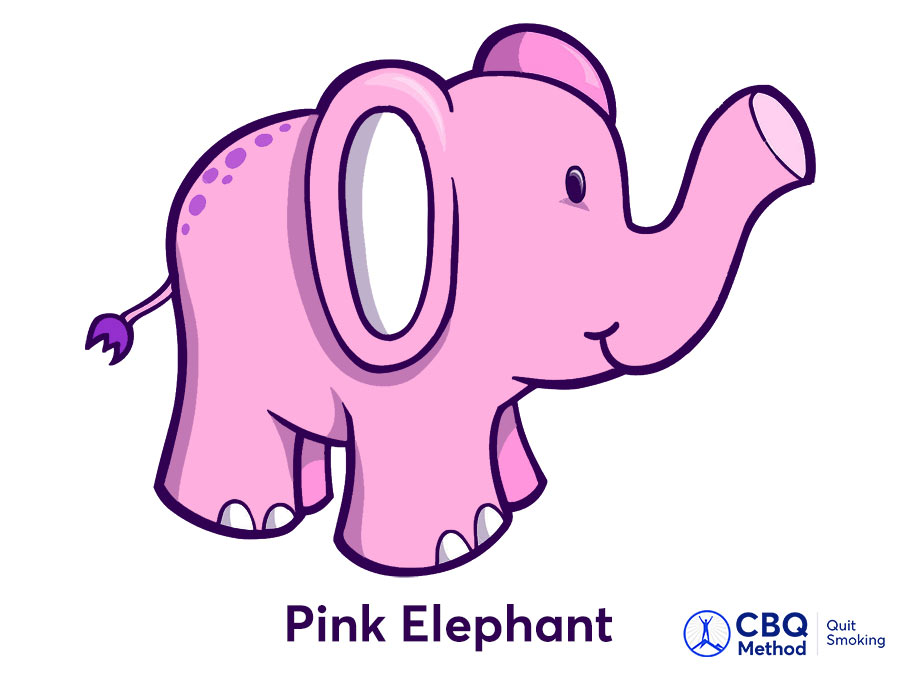Claire was one of our CBQ Program members who quit smoking after 34 years with the CBQ Method.
And some parts of Claire’s story might be similar to your story. So read through, and try to see if you can get some ideas that can help YOU stop smoking.
Back to Claire.
•Claire had a full-time job and a family, making her life extremely busy and stressful.
•She thought she could never feel relaxed without her smokes and that no method can work for her.
•Claire believed that it was too late for her and that she could never quit smoking 2 packs a day.
•She had never tried an online quit-smoking program before like the CBQ Program, and wasn’t sure how videos and exercises can help her quit smoking.
Yet after completing the CBQ Program, she was able to quit smoking with the CBQ method. And find a way to relax when she was stressed. AND help other women in her community do the same.
Here’s how she did it.
How Claire Took the Decision to Quit
Claire is 57 years old and works as a secretary in a newspaper. She is married with 1 daughter, 2 grandchildren and has a cat (Mr. Fluffers).
Claire is an independent, strong and social woman. Everyone loves her; friends, neighbors, coworkers.
However, most people wouldn’t guess she was overly stressed and unhappy.
“Every day I was smoking nearly 2 packs. I was smoking at my breaks at work and at home with my husband. I was out of breath all the time.
I wanted to be healthier but I felt I needed smoking to relax. You know, after so many years I was smoking out of habit more than anything else. I just couldn’t make myself quit.”
Until one Thursday her grandchildren were over at her house and she was so out of breath… that she was coughing more than she was talking.
“I love my grandbabies more than anything. I love cooking for them, playing with them, taking them to school.
And that day got me thinking, what if I don’t live long enough to see them grow up?
Many people die unexpectedly for millions of reasons. Why would I get away with it?”
So Claire decided to quit.
“I first tried to quit cold turkey and then with the gum… I spent a lot of money on these nicotine things and other stop smoking aids.
But still, I was struggling. I didn’t know what to do with my hands. When I was stressed, nothing could calm me down.
And it was impossible to forget about smoking when my husband was smoking next to me all the time. I felt hopeless.”
The result?
Back to cigarettes.
“But I was feeling terrible. Guilty for not quitting and letting down my family and guilty that I enjoyed my smokes.”
One day Claire’s daughter read a couple of CBQ method reviews and sent her the link to the CBQ Method website.
“My daughter’s colleague had quit smoking with Nasia Davos and she was doing pretty well with stress and maintaining her weight. I signed up for the free stuff and got into the newsletter. I liked the CBQ method and all the critiques I read about it.”
“The information in Nasia’s emails changed my perspective on smoking. It was a big change from a lot of what I was getting from other websites with generic advice.
I decided to buy the CBQ Program because it was following the CBQ method. And because of how specific Nasia got, and she was realistic about how committed you have to be on doing the CBQ exercises during the CBQ Program.
Once I had my password for the member’s area, I immediately started watching. I felt like a student doing my exercises and all.”
When Claire started the CBQ Program she was a little nervous. She was afraid that she would quit, but it wouldn’t last.
So…. she reached the second day of the CBQ Program and paused the course for two whole weeks.
But then she gave it one more shot.
How Claire Quit Smoking Without Stress
Claire already knew that she needed to do something with her hands so that she wouldn’t smoke.
But she needed a proven system to replace smoking with another activity. An activity, that made her feel relaxed and fulfilled without her crutch.
“With the CBQ Program, you want to dive right in, but the first couple days give you a base.
Step one, was understanding why I am smoking when I’m stressed or when I feel my hands empty. Step two, was not smoking.”
After a few days, Claire realized that there are other comforting things she can do when she had a craving.
“ I understood why I felt so happy when I was smoking and discovered new things that gave me real enjoyment. I’ve always liked gardening and flowers.
So I used Nasia’s “Replace your smoking pattern” technique from the CBQ method. This helped me replace smoking with another habit: floristry!

“With the CBQ Program you quit smoking in 10 days, but I needed to take 2 more days to let everything sink in. So I finished the program in 12 days and now almost 14 months later I feel happier and younger than ever.”
And now that Claire has a list of things to do when she feels anxious or down— just like she learned during the CBQ Program- she can choose one when she feels stressed.
How Claire Remained a Non-Smoker
“My gardening thing took off and now I host a floristry club in my house! A dozen women from my neighborhood come together once a week, we make amazing bouquets and then sell them. My club has mainly women who are ex-smokers so this club is a support group that is also fun and productive.”
With an effective and efficient system in place, Claire isn’t worried about going back to smoking anymore.
Think about the differences between having a healthy habit – whatever that is- and smoking.
It’s an entirely different lifestyle.
“Smoking is just not as much of a concern anymore. I feel healthier, I smell fresh and I have more energy to play with my grandbabies. My husband couldn’t believe how I felt so happy without my smokes. So he quit too with the CBQ Program.”
What is your review of the CBQ method?
“My review.. I guess it’s simple. Without the CBQ method, I’d be probably trying to quit all by myself. Your blog and emails about the CBQ method are really helpful. They make you understand what’s happening to you and that quitting is easier than you think.
But the CBQ Program really made me accountable. Made me follow through. I felt certain that I had many ways to tackle my habit”
What would you tell others who want to quit smoking?
“It’s never too late. Feeling free from thinking about your next fix and free from the guilt of letting down your family, is something I wouldn’t change for the world.
I breathe so much better and have saved so much money.
My life has changed. If I can do it, anyone can.”
What would you tell others considering joining the CBQ Program? “Take the lessons seriously. Follow them to a T. Don’t just watch it and follow it half-way. You just have to do it. Even if it takes you more than 10 days.




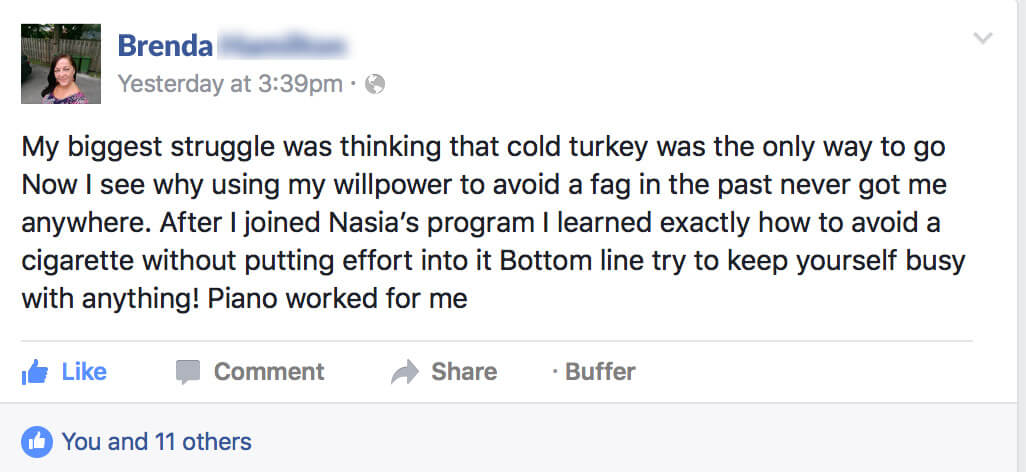 Moving on…
Moving on… But smoking is mostly a mental addiction.
But smoking is mostly a mental addiction.

 “How can YOU make an iron-clad decision to quit smoking?”
“How can YOU make an iron-clad decision to quit smoking?”
